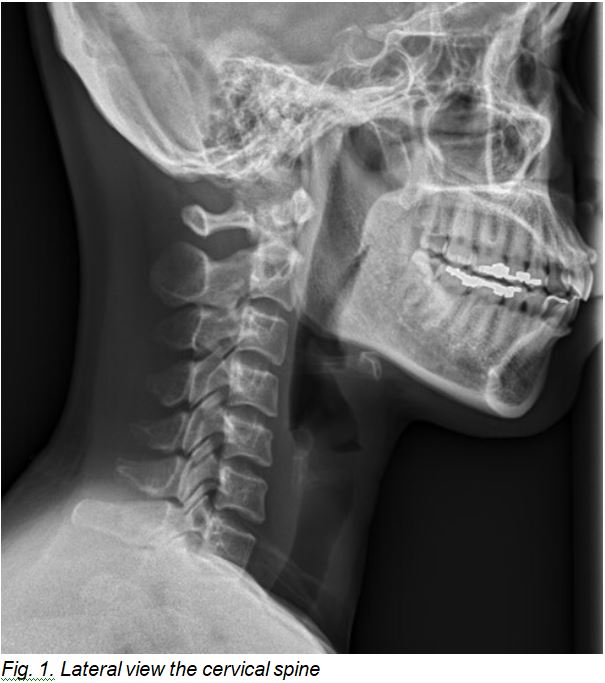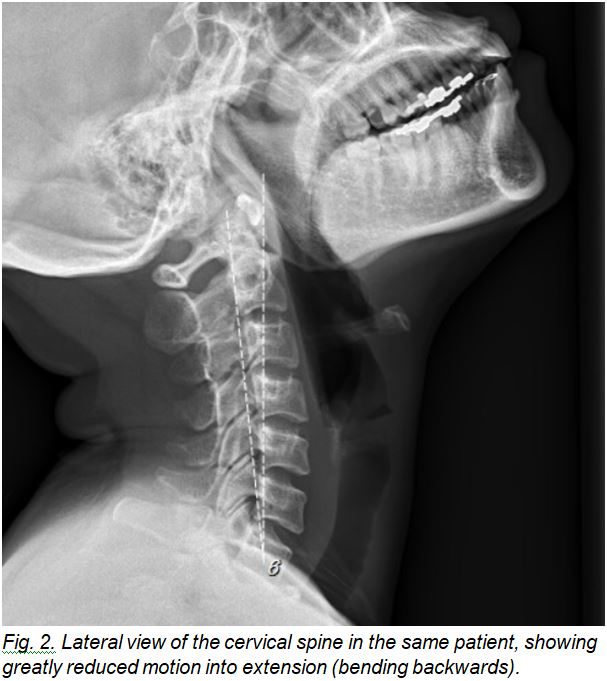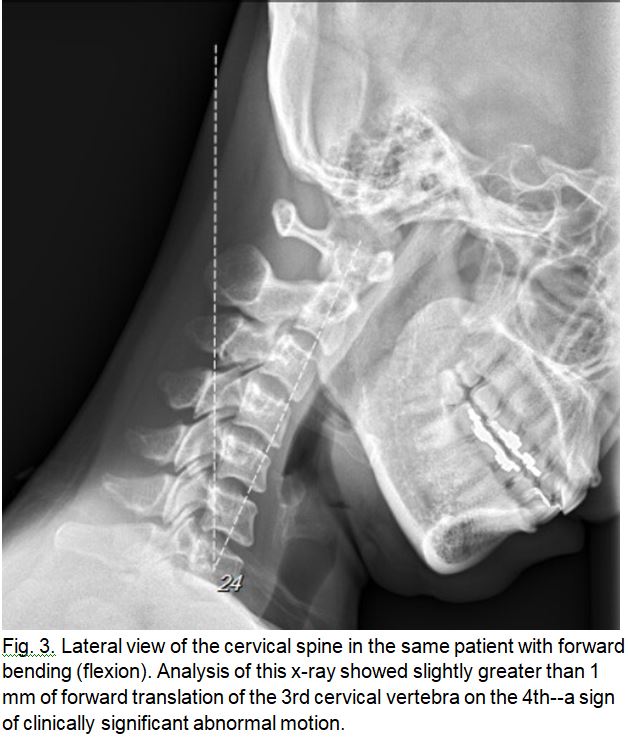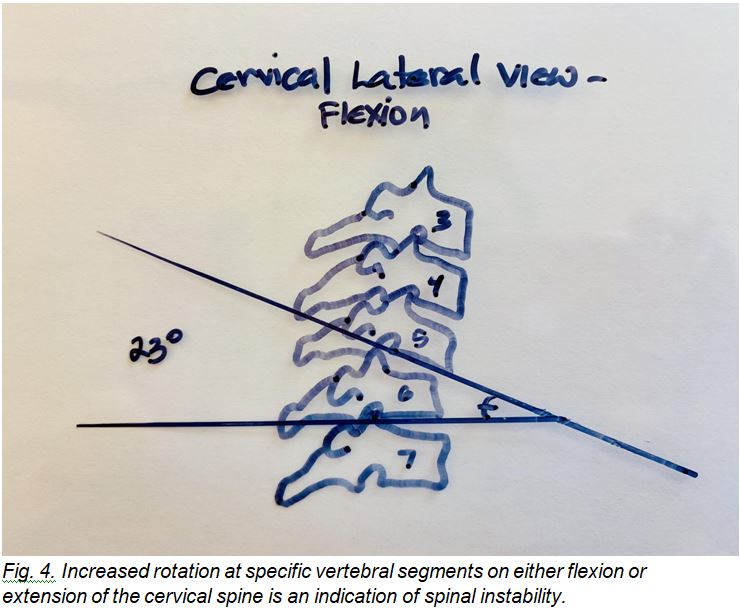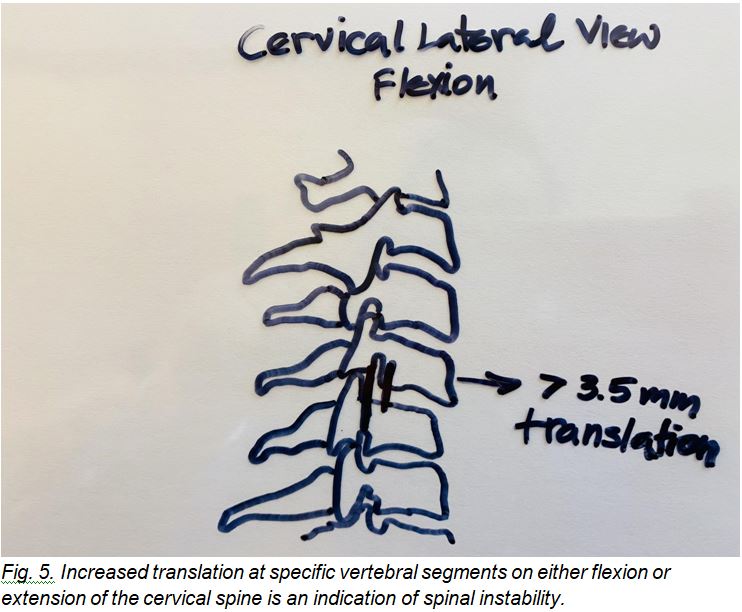 When patients arrive at our office after they have been in a motor vehicle collision (MVC), they are occasionally reluctant to have x-rays taken. The purpose of this blog article is to explain the vital necessity of x-ray imaging and to address the issue of the safety risk associated with such imaging.
When patients arrive at our office after they have been in a motor vehicle collision (MVC), they are occasionally reluctant to have x-rays taken. The purpose of this blog article is to explain the vital necessity of x-ray imaging and to address the issue of the safety risk associated with such imaging.
Use of X-Rays to Assess Soft Tissue Injuries
In a blog article titled “How Good Chiropractic Care Mitigates the Short- and Long-Term Effects of Whiplash Injuries,” it was related that the forces generated during a MVC create violent and unnatural movements which result in soft tissue injuries of the neck and back. Moreover, such injuries have long term consequences, both in terms of chronic pain and diminished overall health.
Because of this, it’s extremely important for your doctor to assess the extent of your injuries. The best way to do so is by ordering an x-ray study and analyzing what happens when you bend your head forwards (flexion) and backwards (extension).
Whiplash injuries result in damage to the soft tissues that hold together the bones of the spine. X-rays are best at showing bones, not soft tissues. However, by comparing the positions of the bones relative to one another with flexion and extension, your doctor can assess the extent and seriousness of the damage to the soft tissues. If there is damage to the ligaments, this shows up on x-rays as either excessive translation or angulation of the bones. Figures 1-3 show x-rays of the cervical spine in neutral, in extension, and in flexion.
These days, sophisticated computerized measuring systems are available to radiologists. Prior to the existence of such systems, templates of flexion and extension views were commonly traced and marked as shown in Figures 4 and 5 to show the presence of abnormal motion.
Why is X-Ray Assessment of Soft Tissue Injuries Important?
When you sustain whiplash injuries, there’s at least a 50% chance of suffering some degree of residual effects for the rest of your life. In some cases, these injuries can be quite severe and disabling. If this is the case, you may be eligible for an injury settlement based on the extent of your injuries. However, the only reliable means of assessing the extent of such damage is by correlating the findings from a cervical x-ray series like the one shown in Figures 1-3 with clinical findings from an exam by a doctor of chiropractic or other qualified doctor.
For the cervical spine, measurements over 1 mm of translation and/or over 7°of rotational (angular) variation are considered to be clinically significant and in excess of normal flexibility.[1] According to the American Medical Association’s Guides to the Evaluation of Permanent Impairment, 5th Edition, abnormal measurements that exceed 11° of angular variation and/or 3.5 mm of translation by definition constitute ligament damage which results in instability. The AMA Guides also specify that such findings represent a “whole person impairment” of 25%-28%, which would be taken into account in determining the amount compensation payable for your spinal injury.
Are X-Rays Safe?
When a doctor recommends any type of procedure or treatment, it’s necessary to weigh the benefits against the potential risks.
An article published online by Harvard Medical School, titled “Radiation risk from medical imaging,”[2] states that routine x-ray imaging poses very little risk of developing cancer later in life. The bigger concern is the increased frequency with which computed tomography (CT) x-ray scans are being ordered, because such studies involve much higher doses of radiation.
A routine x-ray study such as the cervical x-ray series exposes you to about as much radiation as you would receive in a few days or a few years of exposure to naturally occurring radiation in the environment. Such radiation comes mainly from the sun and from radon, a radioactive gas emitted due to the natural breakdown of uranium in soil, rock, water, and building materials.
A routine x-ray exam does two important things:
- It allows for diagnosis and more effective treatment of the soft tissue injuries sustained in the collision.
- It provides important objective evidence of the extent of impairment caused by your injuries.
As the injuries you sustain in a MVC may have devastating long term consequences, the benefit of x-rays does, indeed, outweigh the minimal risk involved.
